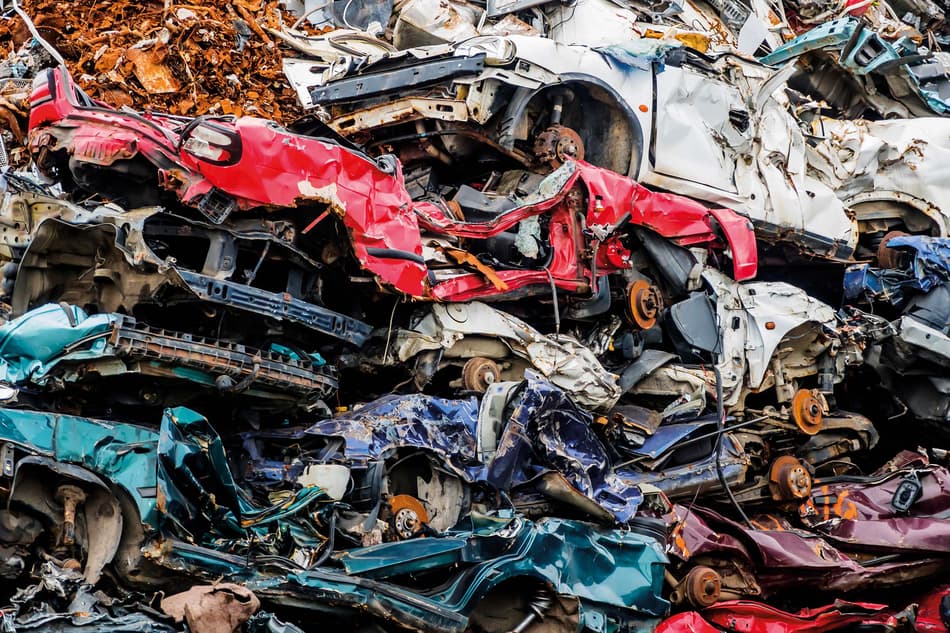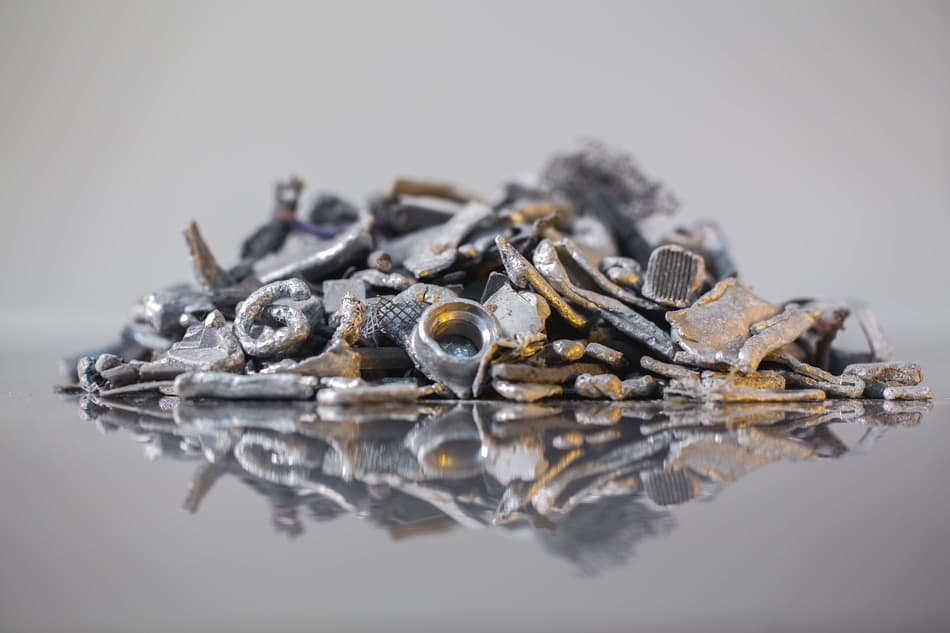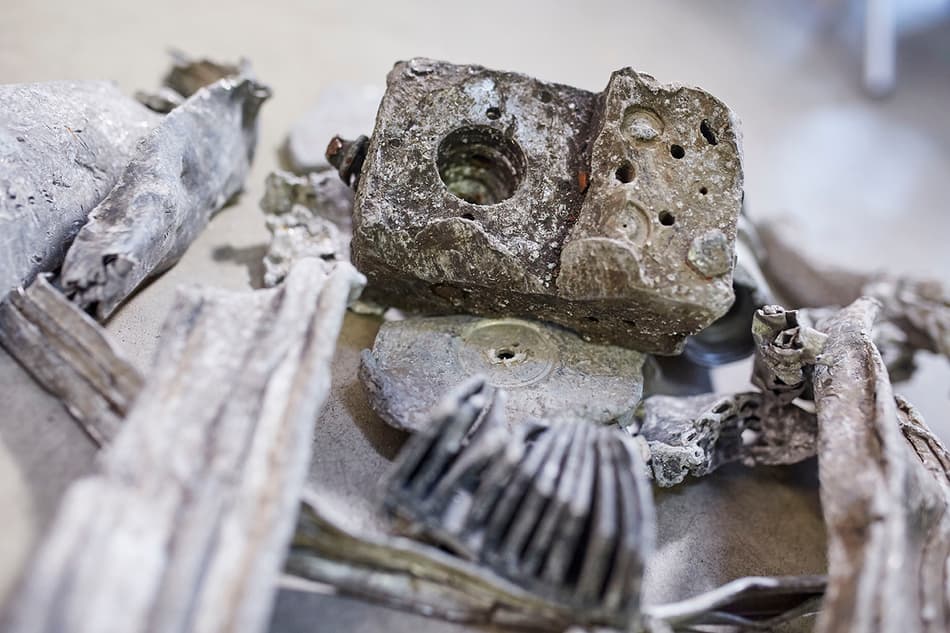Sensor-based sorting technology to derive maximum value from ELV scrap
Historically, South Korean shredder operators exported the bulk of this material to China at a low market price, but with the introduction of the Chinese National Sword in January 2018, the majority of South Korean ELV scrap and mixed metals now remain within South Korea to be used as furnace scrap for steel mills or sold on to secondary recyclers for further processing.
Latest figures suggest that there are 547 ELV dismantlers and just 13 ELV shredder companies throughout South Korea, but some of these shredders are not currently operating. Furthermore, most of these companies are using traditional sorting methods as part of the post-shredder process, such as windshifters, magnets, eddy current separators and hand picking – all of which can have limitations when it comes to recovering high volumes of high purity end fractions from ELV scrap.

Despite the lack of infrastructure and legislation to support ELV recycling, official Government figures suggest that South Korea is achieving a recycling rate of around 86%, but this figure is considered by some to be an overestimation.
A complex material stream
The mixture of materials found in ELV waste is complex and includes ferrous metals, non-ferrous metals and non-metallic materials such as plastics, foam, rubber, glass, textiles and carpeting, ceramics and paper. The non-metallic material is referred to as automotive shredder residue or ASR.
Today, South Korean ELV dismantlers and shredder operators are primarily focused on using magnetic separation to recover materials from the ferrous scrap fraction such as steel and stainless steel alloys, with only a small degree of recovery of materials from non-ferrous metals and any other type of non-metallic materials. Yet the non-ferrous metal fraction in ELV scrap contains several potentially extremely valuable metals, primarily aluminum, copper and magnesium.
Currently, the majority of South Korean ELV shredder operators simply sell the non-ferrous material on as a low-grade material to other recyclers who then use eddy current separators or manual picking to further separate the various fractions found in this material stream.
If, however, shredder operators were instead able to produce outputs of a consistent quality and quantity from ELV scrap, they would be able to command a much higher price for the material, open up many more market opportunities both within South Korea and further afield, and help to increase the nation’s ELV recycling rate closer to the Government’s 95% target.

Learning from European best practice
This is where South Korean shredder operators could learn from their European counterparts who have invested heavily in sensor-based sorting technology. The latest sensor-based sorting technology ensures that that the optimum levels of materials can be recovered from ELV waste at a consistently high quantity and purity. It enables operators to upgrade their mixed metals material on site and sell their material on to the market without involving third parties. Operators in Europe are benefitting significantly from cutting out the third-party processing costs, recovering high quality fractions and ultimately achieving top market prices for their high-quality recovered material.
Sensor-based sorting is playing a key role in helping European countries to meet the minimum 95% reuse and recovery target for all end-of life vehicles set by the European Union. Today in Europe, most of the ferrous and non-ferrous metals found in ELV scrap are recycled (in 2017, the reuse and recycling rate for end-of-life vehicles in the EU stood at 87.8%) and the automotive shredder residue (ASR) is generally used as a fuel in specifically-designed energy plants, thus counting towards the EU’s 95% reuse and recycling target.

Upgrading aluminum
A prime example of what can be achieved using sensor-based sorting technology is upgrading the aluminum found in ELV scrap. Demand for aluminum has risen steadily over recent years and is predicted to increase further over the next two decades.
Historically, both magnesium and aluminum-plastic compounds would have ended up in the aluminum fraction, reducing the quality of the aluminum product and, subsequently, reducing its market value. The challenge for shredder operators, therefore, is how to produce a consistently high quality, high purity furnace-ready aluminum product from the aluminum found in products such as Zorba (a mixed non-ferrous material generated by eddy-current separators in end-of-life vehicles (ELV) and Waste Electronic & Electrical Equipment (WEEE) recycling). Zorba comprises predominantly of aluminum and aluminum alloys, along with ‘heavy’ metals such as copper, brass and zinc.
To achieve a consistently high quality, high purity furnace-ready aluminum product, the aluminum scrap needs to be cleaned of aluminum-plastic compounds, light plastics and aluminum scrap. This requires advanced sorting technology, such as the latest application TOMRA Sorting has developed for our X-TRACT unit. The capabilities and combination of the x-ray technology used in TOMRA’s X-TRACT unit make it by far the most consistently accurate solution available on the market today, capable of meeting the requirements of end customers who specify magnesium-free aluminum or typically well below 0.5% by weight. It can also be used to separate wrought aluminum alloys from cast aluminum alloys found in ELV scrap, something which traditional sorting methods simply couldn’t achieve.
Being able to produce up to 99% purity recycled aluminum vastly enhances the market opportunities for shredder operators who can sell their furnace-ready products across the full size fraction spectrum to secondary aluminum smelters within South Korea or to customers in other countries. And, with the quality and purity of the material guaranteed to be consistent, operators can establish long-term, reliable sales channels, with no penalties for missing quality requirements.
Looking to the future
Although South Korea isn’t yet facing as much legislative pressure as Europe, it’s likely that this will change over the coming years as more stringent legislation and mandatory recycling targets come into force. The latest sensor-based sorting technology enables shredder operators to produce a range of recovered fractions from ELV at a consistent quantity and quality, enabling it to be traded and used in domestic or close-to-home markets. As such, it’s clear that sensor-based sorting technology is likely to play a key role as South Korea becomes more advanced in the way it manages its ELV waste and pushes closer towards its 95% recycling target. Those South Korean shredder operators who are now looking to be among the early adopters of the latest advanced automated sorting technology will certainly have a market advantage over those who delay in their adoption of this type of technology.
* http://www.klri.re.kr/
** https://ec.europa.eu/eurostat/statistics-explained/index.php/End-of-life_vehicle_statistics
